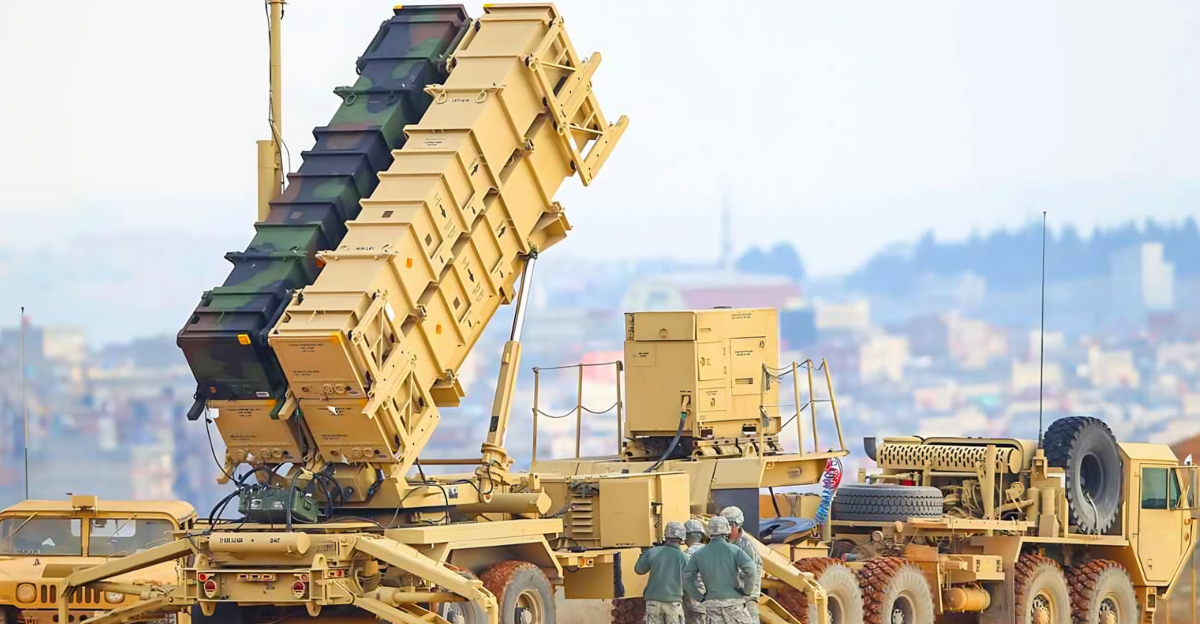
On July 22, 2025, Türkiye made headlines in global defense circles by unveiling its Tayfun Block-4 missile. This hypersonic weapon, reportedly reaching speeds exceeding Mach 5, marks Türkiye’s entry into the exclusive realm of hypersonic technology.
Defense analysts are abuzz, with Sidharth Kaushal from the Royal United Services Institute stating, “For the first time, Turkey has presented this kind of technology globally.” As military dynamics are set to change, one question resonates: Will this breakthrough shift power balances within NATO and beyond? As nations reassess their strategies, the world watches for the next move with bated breath.
Regional Tensions Escalate

The launch of the Tayfun Block-4 arrives at a time of rising regional tensions, particularly in southeastern Europe and the eastern Mediterranean. Turkish Defense Industry Consultant Can Kasapoglu notes, “This is a significant leap for Turkey’s Indigenous weapons sector.” Ankara is positioning itself as a technological heavyweight, prompting neighboring countries and rivals to reevaluate their military capabilities.
The urgency of these developments cannot be overstated, as every missile test and technological advancement could alter deterrence dynamics and alliances in this volatile region.
The Hypersonic Arms Race

Hypersonic weapons have become synonymous with military prowess, and only a few countries, including the United States, Russia, and China, currently possess functional systems. Defined by their ability to travel above Mach 5 and maneuver, these weapons symbolize a new frontier in global weaponry.
Türkiye’s Tayfun Block-4 signals the beginning of a broadening hypersonic club, reflecting an accelerated global arms race. Researchers and policymakers recognize that mastering this technology is crucial for deterrence strategies in the 2020s, leading to considerable investments across NATO.
Fierce Competition for Technological Sovereignty

The pursuit of hypersonic technology is not merely about military strength but also a fight for technological sovereignty. Western Europe, the U.S., and Russia have committed billions toward hypersonic research, escalating the competitive landscape.
France is testing prototypes, while the UK, Germany, and Italy engage in collaborative initiatives, each hoping to be the next to achieve operational status. As countries scramble to catch up, the ambitions of Türkiye and its neighbors ignite discussions on defense posture, credibility, and potential export markets.
Türkiye’s Breakthrough Moment

The public demonstration of the Tayfun Block-4 at Istanbul’s IDEF defense fair is a defining moment for Türkiye’s defense industry. Developed by Turkish arms manufacturers Roketsan, the missile boasts a range of 800 to 1,000 kilometers, positioning Türkiye as the first NATO member outside the U.S. to reveal such advanced technology.
İsmail Demir, head of Türkiye’s Defense Industries, stated, “This is a new era for Turkish deterrence.” This proclamation highlights a technological achievement and a pivotal shift in regional defense capabilities.
Regional Reactions and Concerns

The unveiling of the Tayfun Block-4 has sparked unease among Türkiye’s neighbors. In Greece, security analysts are advocating for a critical reassessment of their military strategies, while Israeli officials are closely monitoring the implications for regional deterrence.
The response from EU defense ministers has also been significant, as concerns mount over an arms race and future missile defense strategies. The ripple effects of this development extend beyond mere politics, reshaping military budgets and procurement strategies across the region.
Voices from Türkiye’s Defense Workforce

Beneath the official accolades, the technicians and engineers at Roketsan view the Tayfun Block-4 as a well-deserved point of national pride. “We are now where few countries can reach,” remarked one engineer, reflecting the enthusiasm of Türkiye’s defense workforce.
Meanwhile, citizens in Istanbul expressed mixed feelings: many hope such advancements will create jobs and enhance national security, but others worry that prioritizing defense spending could detract from essential public services. This debate encapsulates a broader national conversation about identity and security.
NATO’s Balancing Act

The introduction of the Tayfun Block-4 has significant implications for NATO. While the U.S. remains at the forefront of research and deployment, other members, including France, which is currently developing its ASN4G missile, keenly observe how Türkiye’s advancements will affect alliance dynamics.
A NATO spokesperson emphasized the importance of shared capabilities, noting, “Alliances are strongest when capabilities are shared and transparent.” However, the question remains: how can NATO balance national security with cohesion among member states amid such rapid advancements?
The Global Hypersonic Surge

As Türkiye steps into the hypersonic realm, it joins a surging global market. A report from 2024 predicts that the hypersonic weapons market will exceed $30 billion by 2030. With technological advancements being pursued aggressively in countries such as China and Russia, an observable R&D rush is underway in India, Australia, and Japan.
This swift evolution poses questions about the future of global military balance and strategic relationships in a rapidly changing landscape.
The Bigger Picture for Türkiye

As Türkiye fortifies its hypersonic capabilities, domestic and international perceptions are being reshaped. The Tayfun Block-4 represents not only a leap in technological advancement but also a catalyst for changes in defense posturing and regional alliances.
For many in Türkiye, this weapon symbolizes national pride and the potential shift in military dynamics within NATO and the broader geopolitical arena. It’s a moment that carries implications for Turkey’s role on the global stage and its relationships with neighboring countries.
The Economic Implications of Defense Advancements

The defense sector’s expansion may have far-reaching economic effects for Türkiye. Defense analyst Can Kasapoglu asserts, “Investing in indigenous capabilities can dramatically enhance economic independence.” As the country reduces reliance on foreign technology, jobs may proliferate within the defense manufacturing sector, and the ripple effects could prompt growth in related industries.
However, balancing these benefits with essential public investments will be key to sustaining local support for such defense initiatives.
The Historical Context

Historically, Türkiye has aimed to strengthen its military capabilities amid various geopolitical challenges. The Tayfun Block-4 is a culmination of years of focus on indigenous defense technology and production. As the global military landscape changes, Türkiye is positioning itself as a serious player, ready to safeguard its interests while participating in the intricate dance of international relations.
It underscored a commitment to sovereign defense capabilities, resonating with a long-standing narrative of national resilience.
Reassessing Alliances in the Face of Change

The introduction of hypersonic technology has the potential to reshape alliances, requiring a reassessment of existing dynamics. Countries that once viewed Türkiye with suspicion may need to reconsider their stance as it gains technological superiority.
Analysts warn that countries outside NATO may feel threatened, prompting a quest for hypersonic capabilities. This potential for a new arms race adds complexity to international relations, reflecting an increasingly competitive world in defense technology.
Looking Towards the Future

The future of hypersonic weapons is uncertain, yet one thing is clear: the warfare paradigm is being rewritten as countries race to develop and deploy these systems.
The Tayfun Block-4 is just the beginning for Türkiye and serves as a warning and inspiration for other nations seeking to bolster their defense capabilities. With curiosity and apprehension surrounding further developments, the coming years will be crucial in defining global military balances.
A New Era of Defense

As Türkiye embraces its role in the hypersonic weapon sphere, the ambitious arrival of the Tayfun Block-4 represents far more than a technological achievement; it symbolizes a new chapter in the defense narrative and the potential reconfiguration of military alliances.
How Türkiye manages the challenges and opportunities ahead will be closely watched by allies and adversaries alike. This moment not only defines the country’s aspirations but also echoes a broader narrative of evolving power dynamics in a rapidly changing world.






